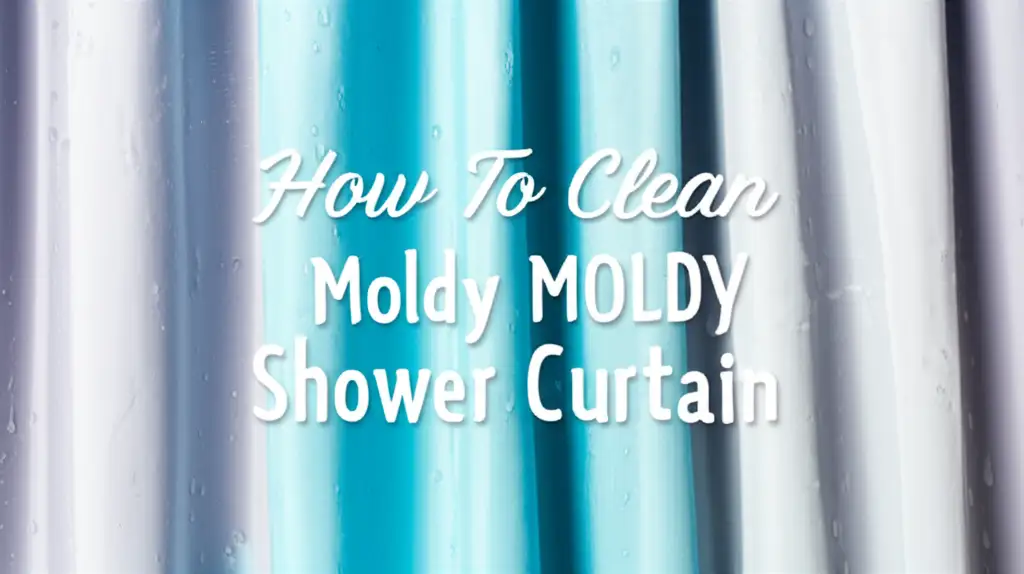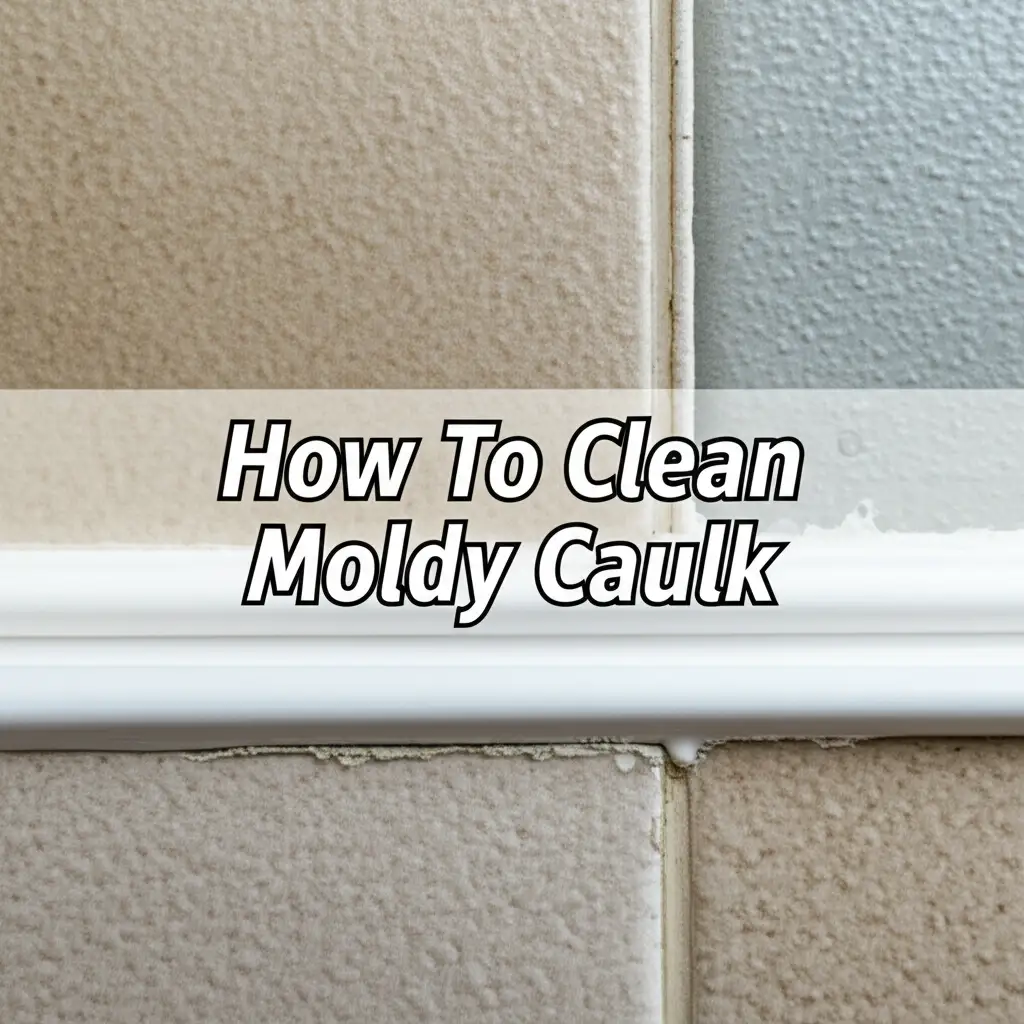· Home Cleaning · 11 min read
How To Clean Moldy Shower Curtain

Banish Mold: Clean Your Shower Curtain Effectively
That unsightly black or pink growth on your shower curtain is a common problem. It is not pretty, and it is not clean. Learning how to clean moldy shower curtain is a common need for many homeowners. Mold thrives in damp, warm places, making your bathroom a prime target. A dirty shower curtain can ruin the look of your bathroom. It also creates an unhealthy environment. I understand the frustration of seeing those dark spots spread.
Do not worry, there are effective ways to remove it. This guide shares simple methods. You will learn about machine washing, natural cleaners, and stronger solutions. I will also provide tips to keep mold from coming back. Let us restore your shower curtain to its fresh, clean state. Your bathroom will look and feel much better.
Takeaway
- Act fast on mold growth to prevent spreading.
- Choose the right cleaning method based on your curtain material.
- Ensure the shower curtain dries completely after cleaning.
- Improve bathroom ventilation to prevent future mold.
- Regular maintenance keeps your shower curtain fresh.
You can clean a moldy shower curtain by machine washing fabric curtains with detergent and vinegar. For vinyl or plastic, use a spray solution of white vinegar or a bleach mixture, then wipe clean. Always ensure the curtain dries completely to prevent mold return.
Understanding Shower Curtain Mold: Why It Appears
Mold and mildew love damp, warm places. Your shower curtain provides the perfect environment for them to grow. Every time you shower, water splashes onto the curtain. It often stays wet for hours. This constant moisture is a mold magnet. The soap scum and body oils that collect on the curtain also provide food for mold.
Air circulation is often poor in bathrooms. This lets humidity levels stay high. This combination of moisture, warmth, and limited air movement allows mold spores to settle and multiply rapidly. You might see black spots or pinkish slime. Black mold is a common type that shows up on shower curtains. Pink mold is not truly mold, but a type of bacteria that also thrives in damp conditions. Both indicate a need for cleaning. Ignoring these growths can lead to unpleasant smells and can even affect air quality. I always recommend addressing mold as soon as you see it.
Safety First: Preparing to Clean Your Shower Curtain
Before you begin any cleaning task, safety is important. Dealing with mold means you should take a few simple steps. First, ensure your bathroom has good ventilation. Open windows or turn on the exhaust fan. This helps clear the air and reduces your exposure to mold spores. It also helps to air out any strong cleaning solution fumes.
Wear protective gear. Gloves protect your hands from harsh cleaners and mold contact. I always put on rubber gloves before tackling a moldy shower curtain. For heavier mold, you might want to wear a mask. This prevents you from breathing in mold spores during the cleaning process. Before applying any cleaner to the entire curtain, do a small patch test. Pick an inconspicuous spot. This checks if the cleaning solution damages or discolors your curtain material. Different materials react differently to various cleaners. This small test can save you from ruining your shower curtain. Taking these precautions makes the cleaning process safer and more effective.
Machine Washing Fabric Shower Curtains
Fabric shower curtains are often the easiest to clean. Many fabric curtains, like those made from cotton or polyester, are machine washable. Always check the care label on your curtain first. This label gives specific washing instructions. It tells you the right water temperature and cycle to use.
Start by removing the curtain from its hooks. Place it in your washing machine. Add a few old towels to the load. The towels act as scrubbers, helping to dislodge mold and mildew. Use your regular laundry detergent. I often add a cup of white vinegar to the wash cycle. Vinegar is a natural disinfectant and mold killer. You can also add half a cup of baking soda for extra cleaning power. Baking soda helps remove odors and boosts cleaning action.
Wash the curtain on a gentle or delicate cycle with warm water. Hot water can sometimes shrink or damage certain fabrics. After the wash cycle finishes, remove the curtain promptly. Do not put it in the dryer unless the label specifically allows it. Air drying is usually best to prevent shrinkage and help the fabric last longer.
Hand Washing Vinyl and Plastic Shower Curtains
Vinyl and plastic shower curtains cannot go into the washing machine. Their material can warp or tear in a machine. Hand washing is the best way to clean these types of curtains. You can do this right in your shower or bathtub. This method is effective for removing stubborn mold and grime.
First, lay the shower curtain flat in your tub. You can also hang it if that is easier for you. Create a cleaning solution. A mixture of equal parts white vinegar and water works well. For tougher stains, use a stronger solution. You might mix one part bleach with four parts water. Always use bleach with caution and ensure good ventilation. Spray the solution directly onto the moldy areas. Let it sit for about 10-15 minutes. This gives the solution time to break down the mold. You can find more specific tips for cleaning vinyl curtains here: How to Clean Vinyl Shower Curtain.
Next, grab a stiff brush or an old toothbrush. Scrub the mold spots vigorously. The mold should start to lift away. Rinse the curtain thoroughly with clean water. Make sure all cleaning solution is gone. Hang the curtain back up immediately. Stretch it out to dry completely. Good airflow is key here to prevent new mold growth.
Natural Cleaning Solutions for Mold
Many people prefer to use natural cleaning solutions. They are safer for your family and the environment. White vinegar is a powerhouse against mold. Its acidic nature breaks down mold effectively. Mix equal parts white vinegar and water in a spray bottle. Spray it directly onto the moldy areas. Let it sit for at least an hour, or even overnight for tough stains. Then, scrub and rinse. This method works well for both fabric and plastic curtains. You can learn more about cleaning with vinegar here: How to Clean Shower with Vinegar.
Baking soda is another excellent natural cleaner. It is a mild abrasive that helps scrub away mold. Make a paste with baking soda and a little water. Apply the paste directly to the mold spots. Let it sit for 15-20 minutes. Scrub with a brush, then rinse clean. Baking soda also helps to deodorize. For more baking soda cleaning ideas, visit: How to Clean Shower with Baking Soda.
Borax is a natural mineral with mold-killing properties. Mix half a cup of borax with two cups of warm water. Spray this solution onto the mold and let it sit. You do not need to rinse it off unless there is a visible residue. Hydrogen peroxide is also effective. Use a 3% hydrogen peroxide solution. Spray it on the mold and let it sit for 10 minutes. Then, wipe it away. These natural options are great for regular maintenance and mild mold problems.
Powerful Cleaning Solutions for Stubborn Mold
Sometimes, mold can be very stubborn. For severe mold growth, you may need stronger cleaning solutions. Bleach is a highly effective disinfectant and mold killer. However, use it with caution. Always work in a well-ventilated area when using bleach. Mix one part bleach with four parts water. Put this solution in a spray bottle. Spray the moldy areas of your shower curtain. Let the solution sit for about 10-15 minutes. Watch the mold disappear.
After letting it sit, scrub the curtain with a brush. Rinse it thoroughly with water. Make sure no bleach residue remains. Bleach can damage some fabrics, so always test a small area first. Never mix bleach with ammonia or vinegar. This creates dangerous fumes. For more on using bleach in your bathroom, check out: How to Clean Shower with Bleach.
There are also commercial mold and mildew removers available. These products contain powerful chemicals designed to kill mold. Follow the product instructions carefully. Always wear gloves and ensure good ventilation. These solutions can be very strong. Use them as a last resort for very tough mold stains. They can bring back the clean look to a heavily affected shower curtain.
Drying Your Shower Curtain Properly
Cleaning your shower curtain is only half the battle. Proper drying is crucial to prevent mold from returning. If you put a damp curtain back up, mold will quickly regrow. After cleaning, make sure to rinse the curtain completely. There should be no soap or cleaning solution residue left. Residue can attract dirt and new mold.
For fabric curtains, if they are machine washable and dryer-safe, use a low heat setting. High heat can damage or shrink certain materials. If air drying, hang the curtain immediately. Stretch it out fully. This allows maximum air exposure. I often hang my fabric curtain outside on a clothesline on a sunny day. The sun helps to kill any remaining spores.
For vinyl or plastic curtains, always air dry them. Hang them back on their hooks. Spread them out to prevent creases where water can collect. Keep your bathroom fan on or a window open. This increases air circulation. Ensure the curtain is completely dry before closing it. A dry curtain is much less likely to develop new mold. This step is as important as the cleaning itself.
Preventing Future Mold Growth
Preventing mold is easier than cleaning it. Good habits keep your shower curtain fresh. First, improve ventilation in your bathroom. Turn on the exhaust fan during and after showers. Open a window if you have one. This helps humidity escape. High humidity is mold’s best friend.
Always stretch your shower curtain out after showering. Do not leave it bunched up. A bunched curtain traps moisture in its folds. This creates a perfect environment for mold growth. Smooth it out so it can air dry completely. Consider using a shower curtain liner. Liners are usually made of plastic or vinyl. They are less expensive to replace than the decorative curtain. The liner takes the brunt of the water and soap scum. Clean the liner regularly, or replace it when mold becomes too much. Many people find cleaning overall bathroom mold helpful for prevention too: How to Clean Mold in Shower.
Regular cleaning also helps. Wipe down your shower curtain a few times a week. Use a spray bottle with a daily shower cleaner or a vinegar solution. This keeps mold spores from settling and growing. A little effort each day prevents a big cleaning job later. You can keep your shower curtain looking clean and fresh.
FAQ Section
Q: Can I wash my shower curtain in the washing machine? A: Yes, many fabric shower curtains are machine washable. Always check the care label first for specific instructions. Add a few towels to the load. Use detergent and a cup of white vinegar for best results. Wash on a gentle cycle with warm water. Air dry the curtain after washing.
Q: How often should I clean my shower curtain? A: You should clean your shower curtain regularly to prevent mold buildup. For daily maintenance, spray it with a vinegar solution after showering. For a deeper clean, wash fabric curtains once a month. For vinyl or plastic, wipe them down weekly. Replace old liners every few months.
Q: Is mold on a shower curtain harmful? A: Mold on a shower curtain can be harmful, especially for people with allergies or asthma. It releases spores into the air. These spores can trigger respiratory issues and other health problems. Removing mold quickly improves your indoor air quality. It also makes your bathroom more hygienic.
Q: What is the best way to prevent mold on a shower curtain? A: The best prevention involves good ventilation and proper drying. Run your bathroom fan during and after showers. Always stretch the shower curtain out fully after use. This allows it to air dry completely. Regularly wipe down the curtain with a mild cleaner.
Q: Can I use bleach on all shower curtain types? A: No, you cannot use bleach on all shower curtain types. Bleach can damage or discolor certain fabrics and plastics. Always test a small, hidden area first. Use bleach only in well-ventilated spaces. Never mix bleach with other cleaners like ammonia or vinegar.
Conclusion
Tackling a moldy shower curtain can seem like a chore. However, it is a necessary step for a clean and healthy bathroom. You now have several effective methods to choose from. Whether you prefer machine washing, hand scrubbing, or using natural solutions, there is a way to get your curtain spotless. My goal was to show you exactly how to clean moldy shower curtain with simple steps.
Remember the key takeaways: act quickly, choose the right method for your material, dry properly, and prevent future growth. A little effort goes a long way in keeping your shower curtain fresh. Regular maintenance and good ventilation are your best defenses against mold. By following these tips, you will enjoy a cleaner, more inviting bathroom. Your shower curtain will look as good as new.
- Shower Curtain Cleaning
- Mold Removal
- Bathroom Maintenance
- Mildew Prevention
- Cleaning Tips




